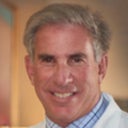Posted underRhinoplasty q&a
How are vitals constantly monitored during rhinoplasty & what are the safety measures for anesthesia?
How do surgeons constantly monitor patient vitals during rhinoplasty? Are the machines hooked onto the patient for the entire duration? Also For Patients undergoing their first rhinoplasty, how do doctors keep an eye out for any adverse impacts of anesthesia. What safety measures are in place incase of a bad reaction? And are there dreams while under anesthesia? I am someone who gets wild/scary dreams when in deep sleep/slumber especially on anxiety inducing days.
Answers (5)
From board-certified doctors and trusted medical professionals
Dr. David M. Kowalczyk, MD, MBA, FACS
Board Certified Facial Plastic Surgeon
Answer
More Rhinoplasty Questions
See all Rhinoplasty Q&AWE SEND PRETTY
EMAILS
What’s trending? Who’s turning heads? Which TikTok myths need busting? We’ve got you. No fluff, no gatekeeping—just real talk. Get our free, unfiltered newsletter.


